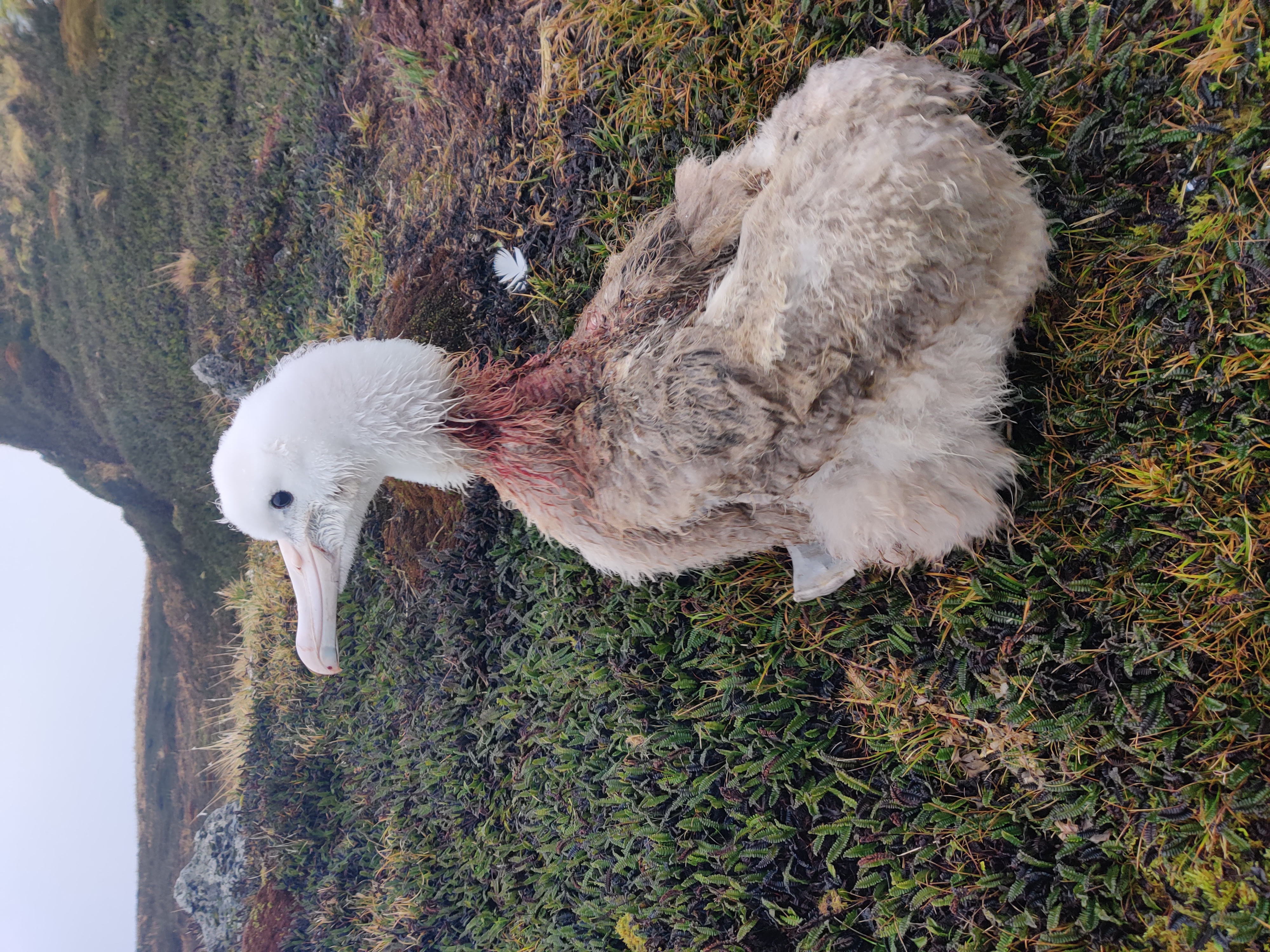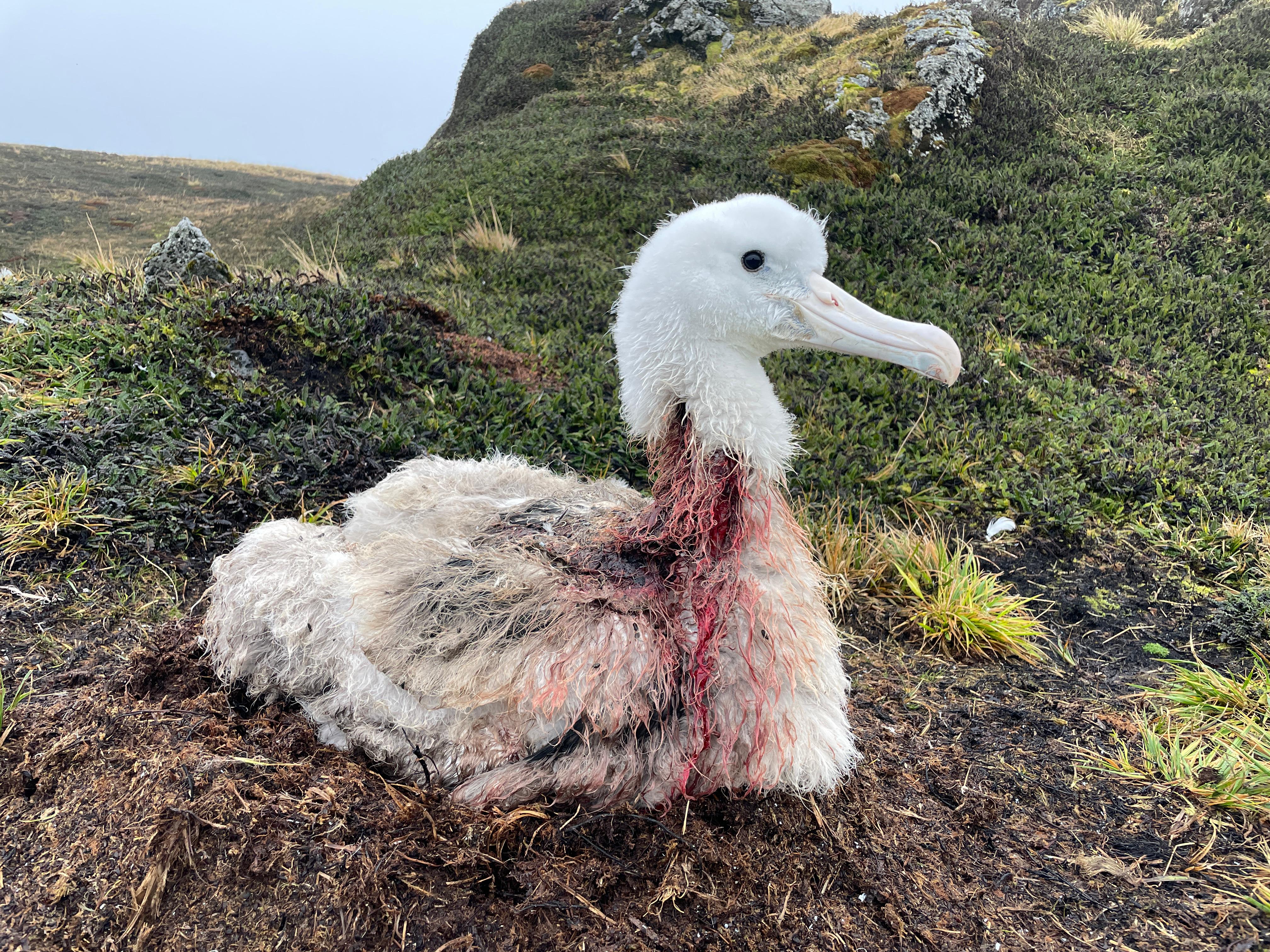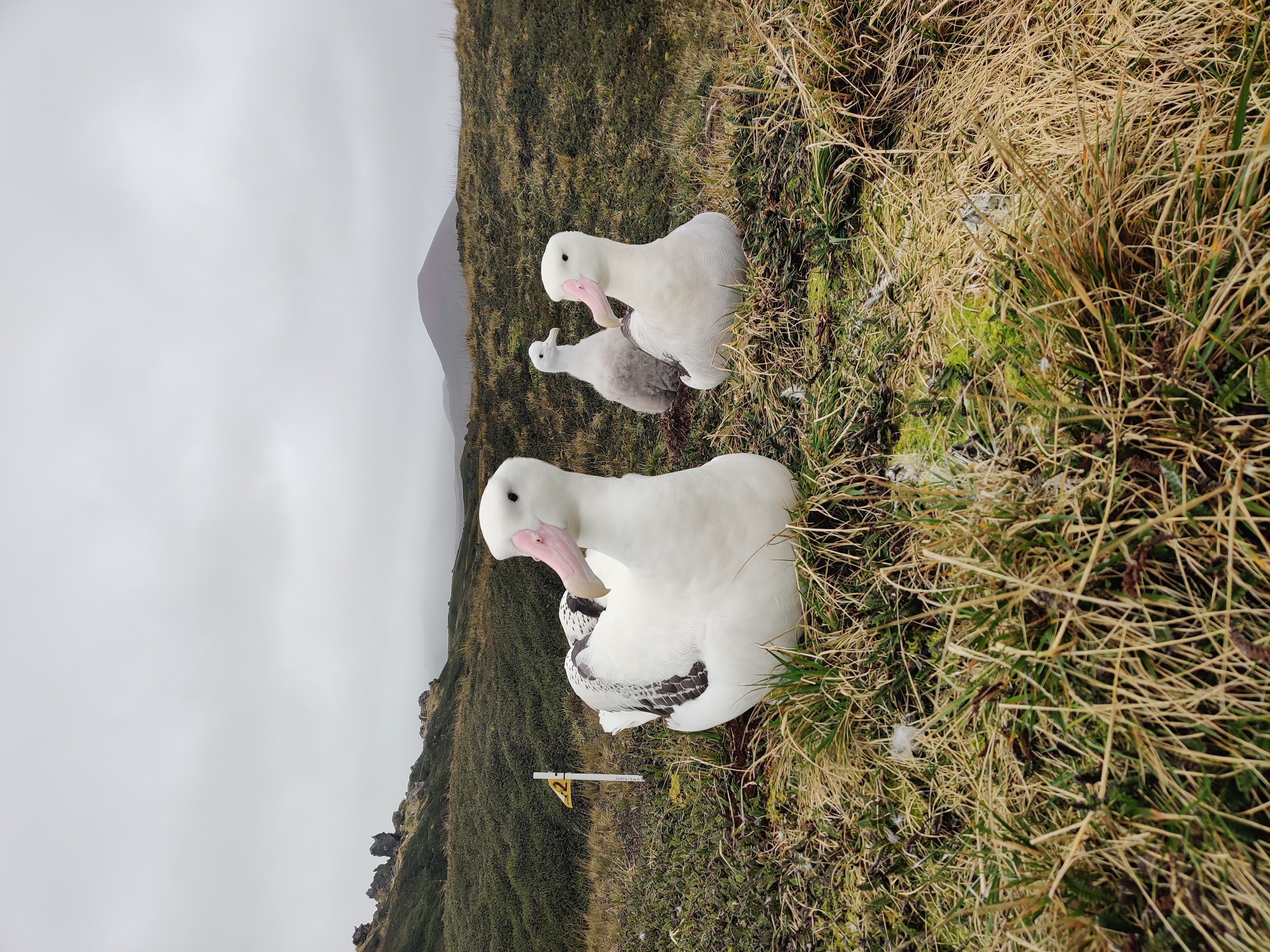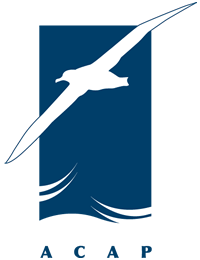
NOTE: The following article is republished from the website of the Mouse-Free Marion Project with permission on Marine Protected Areas Day.

Devastating wounds on a Wandering Albatross chick on Marion Island caused by House Mice, photographs by Rhiannon Gill and Vanessa Stephen
New shocking findings show the desperate need to restore Marion Island to its former status as a breeding refuge for its threatened seabirds by eradicating the introduced House Mice.
On 06 July 2024, researchers working on Marion Island, South Africa’s remote sub-Antarctic territory, discovered a severely wounded chick – the latest victim in an accelerating series of ferocious fatal attacks. They found the four-month-old Wandering Albatross Diomedea exulans chick with bloody wounds on its neck that by the next day had led to its death. These injuries were characteristic of many that have been inflicted by House Mice accidentally introduced by sealers in the early 1800s, which are now eating the island’s threatened seabirds alive.
Marion Island is home to one quarter of all the world’s Wandering Albatrosses and is a critical breeding site for this species, categorized as Vulnerable on the IUCN Red List of Threatened Species. This incident, although far from the first, is one of the worst that has been photographed on Marion Island so far. It is a visible and distressing reminder of the often-unseen damage that mice have been causing for decades on this remote island. The island is currently in the middle of the Austral winter, when mouse predation peaks. This attack is just one of many likely to be recorded in the next two months, as they have been now for many years.
The wounded Wandering Albatross chick was photographed by seabird researchers, Rhiannon Gill, South African Polar Research Infrastructure and Vanessa Stephen, FitzPatrick Institute of African Ornithology, University of Cape Town, who are spending a year on the island as part of long-term monitoring work on Wandering Albatross colonies.
Whilst this may seem a desperate situation, there is hope on the horizon. The Mouse Free Marion (MFM) Project is aiming to halt suffering such as this and reverse the ecological damage caused by mice by undertaking one of the world’s largest invasive rodent eradication projects. This ambitious project is a conservation partnership between the South African government’s Department of Forestry, Fisheries and the Environment (DFFE) and BirdLife South Africa (BLSA). BLSA established the MFM Non-Profit Company to facilitate the implementation of the project. Fundraising is well underway to support this intervention, but more help is urgently needed.

Within a day of the attack, the chick had succumbed to its wounds, with its body scavenged by other seabirds, photograph by Vanessa Stephen
Mouse-Free Marion Project Manager, Dr Anton Wolfaardt, says “These images offer a stark yet vital reminder of what’s at stake. The threat posed by mice is clear, the imperative to address it from a conservation perspective undeniable. Action is also necessary on animal welfare grounds, to stop the suffering and deaths of numerous defenceless seabirds, including this Wandering Albatross chick, caused by mice. “We need to clear 30 000 hectares - the equivalent of over 42 000 football pitches – of mice, and we need your help to do it. If you want to support either our ‘Sponsor a Hectare’ campaign or if you are able to provide more generous funding towards our work, we can progress what we are doing faster and stop these attacks on seabirds.”
Rhiannon and Vanessa found the chick with bloody wounds at Macaroni Bay on the island’s eastern coast, in one of three long-term Wandering Albatross colonies that have been routinely monitored since the early 1980s. The nature of the wounds aligns with directly observed mouse attacks, and with attacks on chicks photographed at night. The chick was seen the week before the attack, in good health and with both its parents, demonstrating the speed at which mouse predation can result in death.

The chick (at back) with its parents days before the mouse attack; photograph by Rhiannon Gill
Wandering Albatrosses generally breed only once every two years and raise a single chick. Very few researchers have witnessed albatrosses returning to their nest after foraging flights hundreds of kilometres long, to discover a corpse rather than a living and hungry chick. Those who have, saw parents reaching out again and again to touch or nudge the chick gently with their huge bills, staying at the nest together for a long time. The loss experienced by these magnificent birds is deeply evident. Every individual death is significant for the resilience of their global breeding population. Should we do nothing, experts predict that the mice may cause the local extinction of 19 of Marion Island’s 29 bird species, including the iconic Wandering Albatross.
House Mice, inadvertently introduced by sealers to Marion Island in the early 19th century, have been recorded preying on both seabird chicks and adults. More recently, mouse attacks on adult Wandering Albatrosses, first recorded in April 2023, are spreading across the island this winter. Climate change is favouring mice as the island becomes warmer and drier, the mouse breeding season lengthens, and their summer populations increase. Predation incidents have increased in winter, when mice have fewer alternative foods such as invertebrates and plant seeds.
The mouse eradication plan for Marion Island builds on over six decades of practical experience, and scientific research from more than 700 island rodent eradications that have succeeded, and the few that have not. At 30 000 hectares, the Marion Island mouse eradication will be larger than any previous mouse eradication effort undertaken. A fleet of helicopters guided by Global Positioning Systems and equipped with bait application buckets will spread a specially formulated rodenticide bait across the entire island to ensure that every mouse territory is treated with bait: the only method that has proven successful at eradicating rodents from large islands.
However, to pull off this critically important and historic conservation intervention, the Mouse-Free Marion Project requires support in the form of direct donations, or hectares sponsored. To find out more, make a donation, or to sponsor a hectare, please visit www.mousefreemarion.org or contact us at
With thanks to Rhiannon Gill and Vanessa Stephen
The Mouse-Free Marion Project team, 31 July 2024; republished by ACAP Latest News on 01 August 2024

 Français
Français  English
English  Español
Español